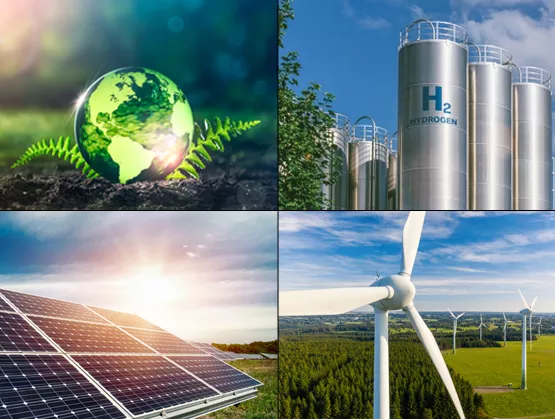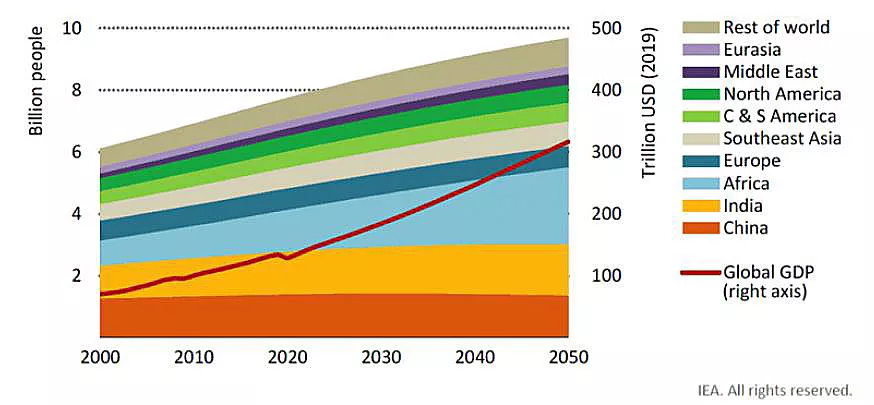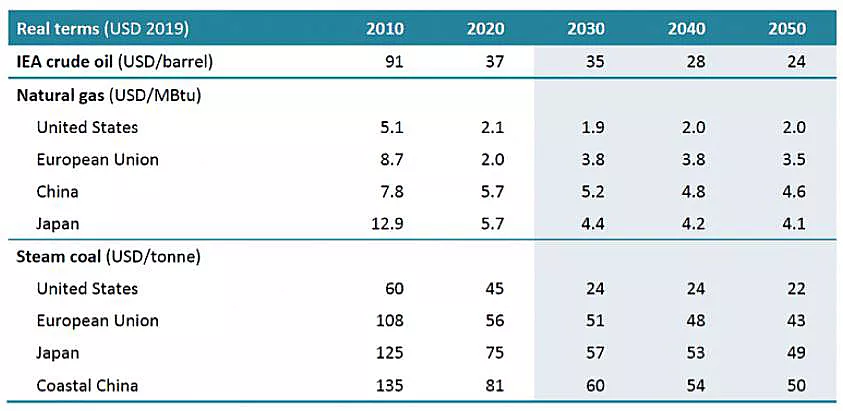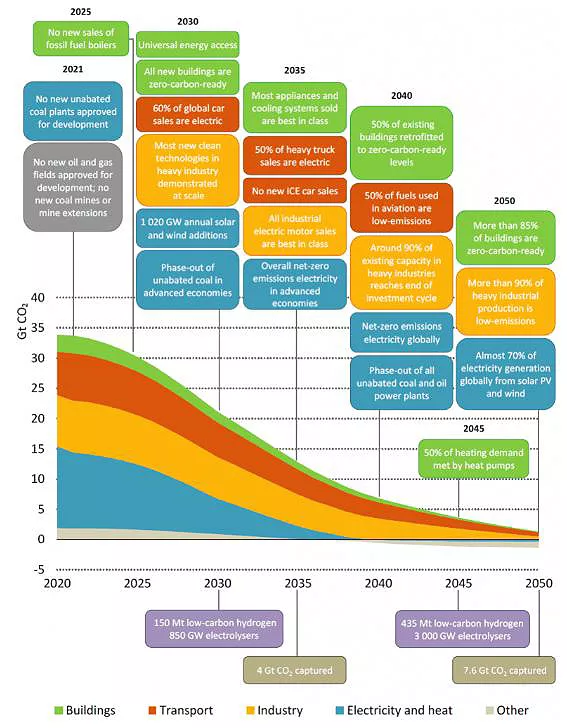
The International Energy Agency (IEA) is an autonomous intergovernmental organization established in 1974 (in the wake of the 1973 oil crisis) within the Organization for Economic Cooperation and Development (OECD) framework. One of its core missions is promoting secure and affordable energy supplies to foster economic growth. It is best known for its annual publication of the World Energy Outlook and Energy Technology Perspectives.
In early 2020, the IEA called on governments to focus their economic recovery plans on clean energy investments to create the conditions required for a sustainable recovery and a long-term structural decline in carbon emissions. Its recently published report, Net-Zero by 2050 – A Roadmap for the Global Energy Sector considers actions needed to reach net-zero emissions (NZE) by 2050. The report draws on a joint analysis collaborating with the International Monetary Fund and the International Institute for Applied Systems Analysis. It concludes that the enormous challenge of transforming our energy systems is also a huge opportunity for our economies, with the potential to create millions of new jobs and boost economic growth.
World population and global GDP
One of the report’s most salient conclusions is that while the global population will likely grow by just over 20% by 2050, from its current level of just under 8 billion to around 9.7 billion, and the global economy (gross domestic product) will more than double – resulting in a per-capita productivity increase of nearly 65%. The report notes that population growth will be greatest in less developed regions (Africa) and emphasizes the need to ensure increased opportunities and benefits are equitably distributed.

By 2050, the world's population expands to 9.7 billion people and the global economy is more than twice as large as in 2020.
The pathway to NZE focuses solely on the transition within the energy sector, without offsets from outside the sector. It is designed to maximize technical feasibility, cost‐effectiveness and social acceptance while ensuring continued economic growth and secure energy supplies. The report provides a global view but recognizes that countries will not start in the same place or finish at the same time. Advanced economies will reach net-zero before emerging markets and developing economies and must assist others in getting there. The proposed path is one of many possible journeys, and the report examines key uncertainties, including the roles played by bioenergy, carbon capture and behavioral changes.
Oil, gas and coal wholesale prices
The report gives high priority to considering the human side of the transition. Who will benefit, and who will lose? What behavioral changes are needed, and what challenges do those changes present? It also acknowledges the uncertainty inherent in its projections.
For example, it predicts significant reductions in the cost of fossil fuels as we transition to renewable sources. (Other reports have different predictions.)

Drops in usage/demand for fossil fuels will preclude further fossil fuel exploration and new expansion. High-cost producers will no longer be economically viable, and production will shift to regions with proven reserves and low extraction costs. With low demand, prices will be dominated by operating costs. These predictions are perfectly logical, perhaps even obvious. For many of us accustomed to viewing energy as a cost to be minimized, our unconsidered reaction to lower prices is one of welcome. But for such large-scale permanent changes, we must also consider the impact on countries and individuals who currently rely on fossil fuel production for their livelihood.
The price of carbon dioxide
There is a broad scientific consensus that greenhouse gas emissions are causing climate change. In economic terms, these emissions are degrading a shared resource, our environment, and constitute a real but unaccounted (and difficult to estimate) cost. This report (and almost all discussions of solutions for climate change) is predicated on our ability to globally impose a price for carbon emissions that will account for the unrecognized environmental cost and allow market forces to bring about a solution.
It models the carbon price as increasing over the analysis period and tiered to reflect the varying ability-to-pay across the advanced, emerging and developing economies. The advanced economies will lead, followed by emerging and then developing economies. Advanced economies will start at $75/metric ton of CO2 (tmCO2) in 2025, rising to $130/tmCO2 by 2030 and $250/tmCO2 in 2050. Mid developing economies will go from $45/tmCO2 to $200/tmCO2 over the same period. Less developed economies will go from $3/tmCO2 to $55/tmCO2.
The tiered structure makes participation by less developed countries economically feasible. It puts the greatest burden on advanced economies that have the greatest ability to pay and have historically emitted the most greenhouse gases and benefitted the most from the lack of a cost for doing so.

An example from our market helps to illustrate the impact of carbon cost. Currently, typical utility costs for an Edwards iXH6050HTXS vacuum pump are $11.7K/year. At the current carbon intensity level, a carbon cost of $75/tmCO2 will add $4K/year. $250/tmCO2 would add $13.5K/year. The messages to us as equipment suppliers are clear. As carbon costs increase:
- Equipment suppliers must improve the energy efficiency of their products.
- Equipment users will give more weight to operating costs and energy efficiency in their purchase decisions and expansion planning.
- Transitioning to renewable, low-carbon-intensity energy that avoids carbon costs will provide increased economic and environmental benefits to participants at all economic levels – individual, corporate, national and global.
The road to 2050
It’s a journey – it’s not going to happen overnight. The report sets out clear milestones – more than 400 in total, spanning all sectors and technologies – for what needs to happen, and when to transform the global economy from one dominated by fossil fuels into one powered predominantly by renewable energy. General goals include saving energy, eliminating coal, capturing carbon, pumping heat, electrifying cars and trucks, expanding wind and solar power, developing hydrogen, finding low-emission resources for air travel, and more. This graphic summarizes the most important milestones:

About the Author
 Chris Jones is Environmental Solutions Business Development Manager at Edwards Vacuum. Jones is a Ph.D. chemist with extensive experience developing methods to help manage environmental compliance within the semiconductor, nuclear, military, and pharmaceutical industry sectors.
Chris Jones is Environmental Solutions Business Development Manager at Edwards Vacuum. Jones is a Ph.D. chemist with extensive experience developing methods to help manage environmental compliance within the semiconductor, nuclear, military, and pharmaceutical industry sectors.
 At SEMICON Southeast Asia 2023, May 23-25, in Penang, Malaysia, Jones will deliver the presentation Playing Our Part in the Semiconductor Industry’s Response to Global Warming and Climate Change. Register for the event, the region's premier electronics manufacturing supply chain exposition and conference.
At SEMICON Southeast Asia 2023, May 23-25, in Penang, Malaysia, Jones will deliver the presentation Playing Our Part in the Semiconductor Industry’s Response to Global Warming and Climate Change. Register for the event, the region's premier electronics manufacturing supply chain exposition and conference.
Edwards Vacuum is a founding member of the Semiconductor Climate Consortium, a recently formed industry group focusing on the challenges of climate change and working to speed industry value chain efforts to reduce greenhouse gas emissions in member company operations and across other sectors of the value chain.
 Discover how the Semiconductor Climate Consortium is working to accelerate efforts by the industry value chain to reduce greenhouse gas emissions or become involved by contacting us at scc@semi.org.
Discover how the Semiconductor Climate Consortium is working to accelerate efforts by the industry value chain to reduce greenhouse gas emissions or become involved by contacting us at scc@semi.org.